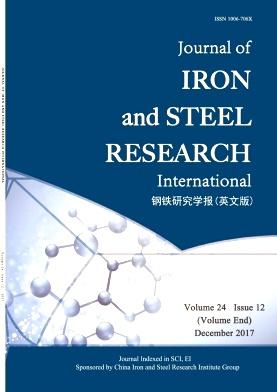Effects of strain states on stability of retained austenite in medium Mn steels
Abstract
Based on uniaxial tensile and plane strain deformation tests, the effects of strain states on the stability of RA (retained austenite) in medium Mn steels, which were subjected to IA (intercritical annealing) and Q&P (quenching and partitioning) processing, were investigated. The volume fractions of RA before and after deformation were measured at different equivalent strains. The transformation behaviors of RA were also investigated. The stability of RA differed across two different transformation stages at the plane strain state: the stability was much lower in the first stage than in the second stage. For the uniaxial tension strain state, the stability of RA corresponded only to a single transformation stage. The main reason was that there were two types of transformations from RA in the medium Mn steel for the plane strain state. One type was that the martensite originated in the strain-induced stacking faults (SISF). The other type was the strain-induced directly twin martensite at a certain equivalent strain. However, for the uniaxial tension state, only the strain-induced twin martensite was observed. Dislocation lines and dislocation tangles were also observed in specimens deformed at different strain states. In addition, complex microstructures of stacking faults and lath-like phases were observed within a grain at the plane strain state.

 求助内容:
求助内容: 应助结果提醒方式:
应助结果提醒方式:


